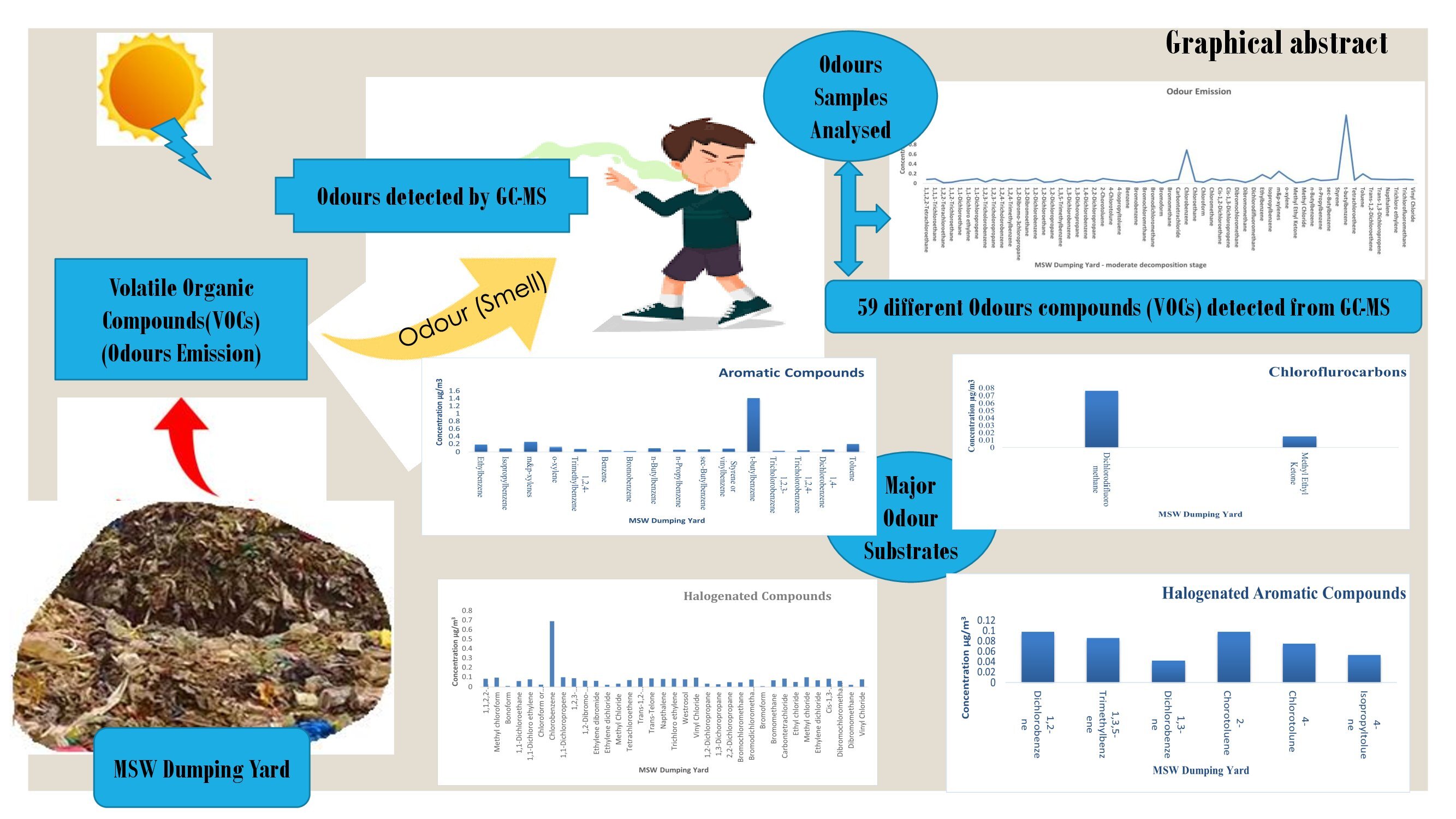
Odour is a major concern as they are termed hazardous to the surroundings as well as life forms when they are exposed to the environment. Odour emission is also one of the indicators of environmental changes that impact the environment. Among the different sources of odour emission, in the dumping yard itself, different types and ages of waste are dumped in the municipal solid waste (MSW) dumping yards. This study aims to relate odour emission and concentration changes caused by different weather patterns. Different periods of waste (fresh waste, moderate waste, and ripened waste) and weather seasons (summer and winter) affect the odour concentrations. Mixtures of gases and intolerable odours are major components of the MSW dumping yard. The odour concentration was monitored in the different periods of waste (moderate wastes) at different locations in the MSW dumping yard. In this study, it was found that meteorological conditions are also one of the main influences on odour concentrations in the environment. In this study, a comprehensive investigation of odour pollution from a local MSW dumping yard has been performed. The odour concentration indicates that the maximum range of aromatic hydrocarbon chemical compounds (volatile organic compounds) reported was T-butylbenzene at 1.41µg/m3 and the minimum range was Sec-butylbenzene at 0.07µg/m3. This study will provide information on odour emissions in urban areas and how VOC (Volatile Organic Compounds) components are present and affect the dumping yards surrounding those areas
Total file downloads: 11